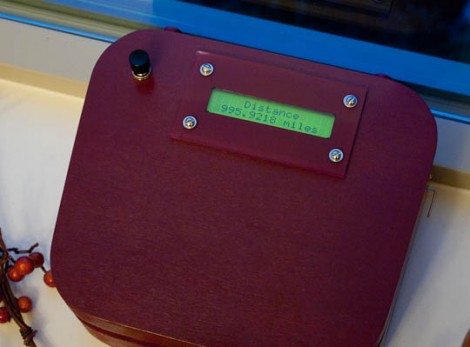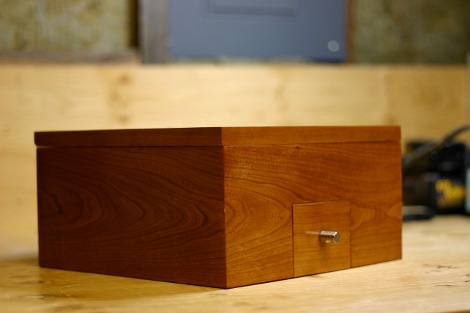
This is the reverse geocache box that [William Dillon] built as a Christmas gift this year. He started with an interestingly shaped wooden box from the craft store. The clasp to keep it shut uses a servo motor on the lid with a wooden arm that grasps a screw on the base. As with the original geocache box, the Frustratomatic, and the smaller geocache, the box is designed to open only when in the correct geographic location thanks to the GPS module inside. That was a problem for [William] when a bug in his firmware locked the box during development while the key location was 1000 miles away. Luckily the box uses hinges that are attached from the outside with screws. We wonder how feasible it would be to use the mounting screws from the LCD screen to implement a coded emergency entry, using one as ground and the others as paths to microcontroller pins.












